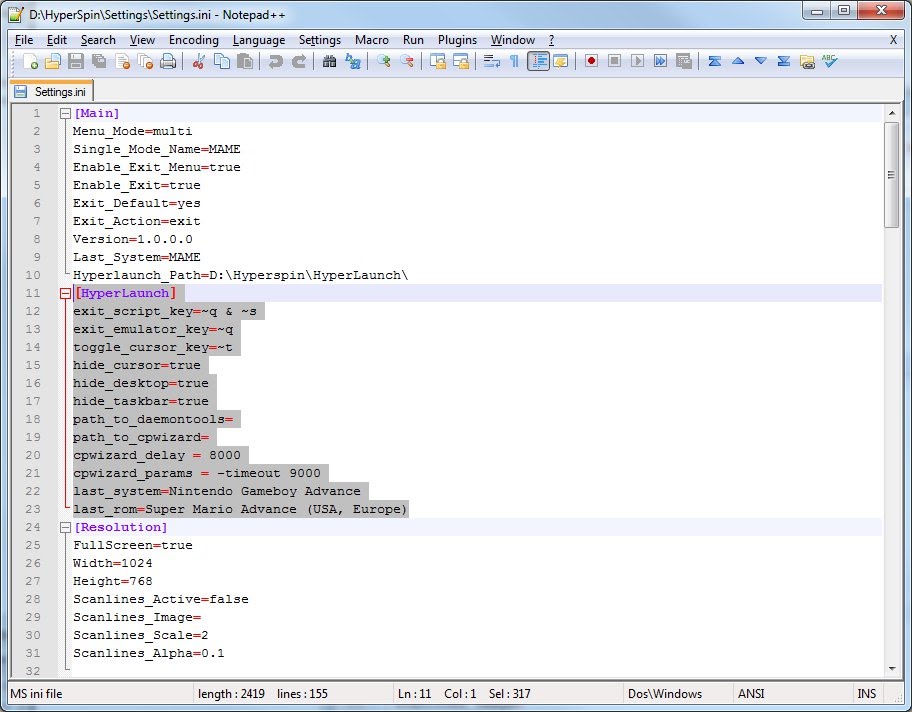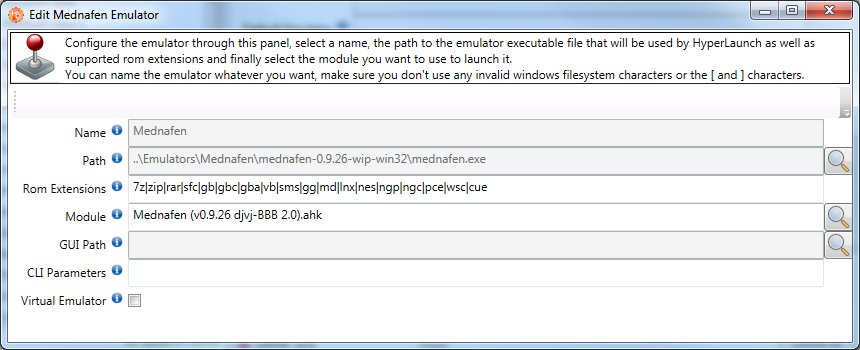Difference between revisions of "RocketLauncher Updating an Install from v2"
(Added Emulators folder to list that can be removed from HyperSpin root directory) |
|||
| Line 22: | Line 22: | ||
=== Step 2 - RocketLauncher & RocketLauncherUI: Download your favorite Front End companion!! === | === Step 2 - RocketLauncher & RocketLauncherUI: Download your favorite Front End companion!! === | ||
| − | Download RocketLauncher and RocketLauncherUI folders and contents from the forum Downloads section | + | Download RocketLauncher and RocketLauncherUI folders and contents from the forum [https://rlauncher.com/forum/index.php?resources Downloads] section. These can be located anywhere on your computer but it is recommended that they get placed in your RocketLauncher\Media folder to make them simple to find when you need them, plus it will also make it easier to configure some parts of RocketLauncher. |
=== Step 3 - Old Modules === | === Step 3 - Old Modules === | ||
Latest revision as of 23:39, 10 January 2022
Contents
- 1 How to Update an Install from HyperLaunch 2.x
- 1.1 Step 1 - HyperSpin.exe
- 1.2 Step 2 - RocketLauncher & RocketLauncherUI: Download your favorite Front End companion!!
- 1.3 Step 3 - Old Modules
- 1.4 Step 4 - Connect RocketLauncher & HyperSpin: Point HyperSpin to RocketLauncher directory
- 1.5 Step 5 - Cleaning up your Hyperspin inis
- 1.6 Step 6 - System Names with Manufacturer tags
- 1.7 Step 7 - Emulator Folder Names
- 1.8 Step 8 - Install the font for Pause
- 1.9 Step 9 - Move your <exe> tags in your xmls to Games.ini
- 1.10 Step 10 - Additional Utilities
How to Update an Install from HyperLaunch 2.x
RocketLauncher is not just an update but rather an upgrade. You will be completely changing everything about HyperLaunch. Follow these steps and you will be on your way getting it installed.
Remove these files & folders from your HyperSpin root directory and back them up in a safe place until after your upgrade is verified working:
- Emulators\ - See Step 7 - Emulator Folder Names
- Keymapper Profiles\ - This folder does not exist anymore but refer to the keymapper section for the correct placement of your profiles for use with RocketLauncher.
- Modules\
- Settings\Global Settings.ini - Only remove this file, not the folder.
- 7z.dll
- 7z.exe
- AutoHotkey.dll
- HyperSpin.exe
- HyperLaunch.exe
- HyperLaunch.log
Step 1 - HyperSpin.exe
Download the latest version of HyperSpin from HERE and replace your existing HyperSpin.exe. This is required for RocketLauncher to function.
Step 2 - RocketLauncher & RocketLauncherUI: Download your favorite Front End companion!!
Download RocketLauncher and RocketLauncherUI folders and contents from the forum Downloads section. These can be located anywhere on your computer but it is recommended that they get placed in your RocketLauncher\Media folder to make them simple to find when you need them, plus it will also make it easier to configure some parts of RocketLauncher.
Step 3 - Old Modules
If you didn't already, delete your Modules folder located in your Hyperspin root Directory. These modules have been moved to the RocketLauncher folder and have been completely rewritten to accommodate the new features of RocketLauncher so these Modules are no longer required. If you know you set any settings inside your modules, you can keep those for now in case you need to reference those settings to apply to in RocketLauncherUI later.
Step 4 - Connect RocketLauncher & HyperSpin: Point HyperSpin to RocketLauncher directory
Follow the guide here
Step 5 - Cleaning up your Hyperspin inis
The following highlighted lines from are an example of ones that should be deleted, but you may have more:
Step 6 - System Names with Manufacturer tags
RocketLauncher does not support the loose system name structure. For example, Nintendo shall be named Nintendo Entertainment System. Gamecube shall be called Nintendo GameCube, etc. An easy way to tell if your system is named correctly is if the icon appears next to your system name and your title image shows at the bottom in RocketLauncherUI. You can always check your RocketLauncherUI\Media\Icons folder to see if the system name is supported.
Another method, if you use HyperSpin, is to ensure all your Systems in match exactly to the System Names listed on HyperList on the Hyperspin forums http://hyperlist.hyperspin-fe.com/. As an example, the Game Boy should be named “Nintendo Game Boy”, not “Nintendo GameBoy” (note the lack of a space), or “Game Boy”. This will make your configuration and running of RocketLauncher much smoother and the new modules will work across the board.
From now on, whenever you create a new System via Main Menu Wizard in HyperHQ, make sure the new name you enter matches HyperList exactly.
For HyperSpin users, be sure to check these locations and update them to match the correct system name. Places you need to update are marked as "SYSTEMNAME":
- Hyperspin\Databases\SYSTEMNAME\SYSTEMNAME.xml
- Hyperspin\Databases\Main Menu\Main Menu.xml (open the file an editor and update the system name in there)
- Hyperspin\Media\SYSTEMNAME\
- Hyperspin\Media\Main Menu\Images\Wheel\SYSTEMNAME.png
- Hyperspin\Media\Main Menu\Themes\SYSTEMNAME.zip
- Hyperspin\Media\Main Menu\Video\SYSTEMNAME.mp4
- Hyperspin\Settings\SYSTEMNAME.ini
Step 7 - Emulator Folder Names
This step isn’t mandatory, but again, it will make your setup and maintenance of RocketLauncher much smoother in the long run. It is recommended to keep all your Emulators under the one folder, with sub folders for each revision of an emulator in it’s own folder.
eg. D:\Emulators\MAME\MAME 0.148\
If you want a really simplified install of RocketLauncher, you can go to the Emulators tab in RocketLauncherUI and look at the Path entries for each emulator you want to use and make your paths match those in the ini file. If you decide to keep your own folder structure for emulators you can, you can follow the RocketLauncherUI guide to see how to set up your emulator paths.
You can see in the picture above that the Path contains ..\ at the start of the Path. This indicates that the folder is a "relative path" and in the Emulators root directory,
eg. D:\Emulators\Mednafen\mednafen-0.9.26-wip-win32\medanfen.exe
This method gives RocketLauncher and the emulators great portability. If you decide to move your RocketLauncher setup to another drive, you won’t need to reconfigure RocketLauncher to match the paths of the emulators on the new drive you move it to.
Now that you have set up the base for your new RocketLauncher install, you can follow the RocketLauncherUI guide to learn how to configure RocketLauncher with all the new features!
Step 8 - Install the font for Pause
Pause uses the default font BebasNeue.ttf. You can find this on dropbox or on your folder after you download all the files in RocketLauncher\Media\Fonts
Right click this file and select Install. You can now see all the text in Pause.
Step 9 - Move your <exe> tags in your xmls to Games.ini
RocketLauncher does not use those exe tags, and they need to be transitioned out of your xmls and into RocketLauncher's games.ini files found in your System settings folders. See the Alternate Emu Mapping page on how to create a games.ini for each of your systems and assign games into it.
After this is done for each system, Delete all the <exe> tags in the database. You can do this by using find/replace or by just re-downloading the xml again from HyperList as HyperList does not store these tags.
Step 10 - Additional Utilities
RocketLauncherUI makes use of various programs such as Xpadder, JoyToKey, VJoy, and more. It is highly recommended to create folders for these in C:\Utilities\ if you have not already done so.
Recommended: DAEMON Tool Lite, Notepad++, Xpadder, JoyToKey, and VJoy.

